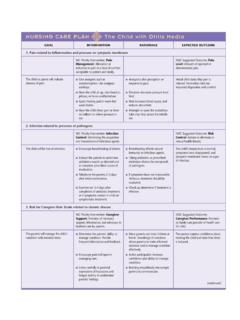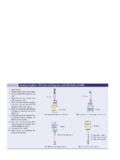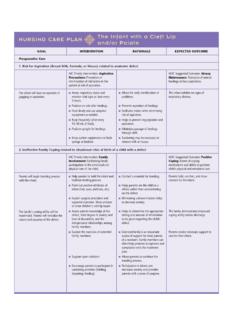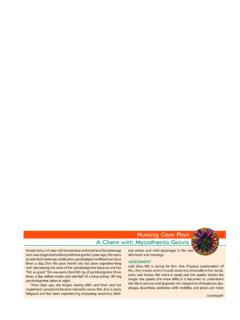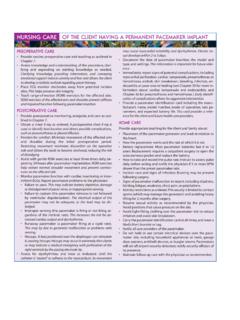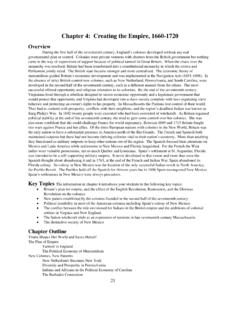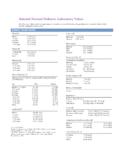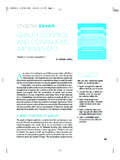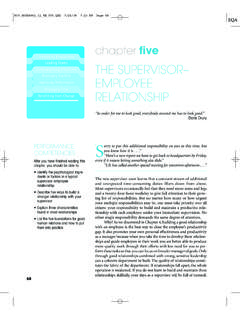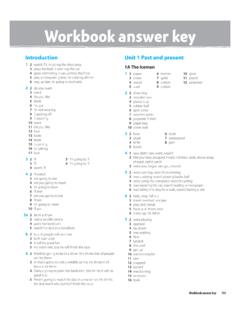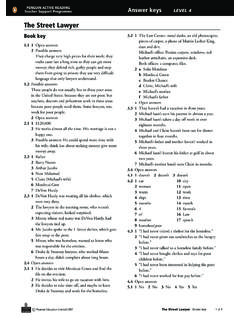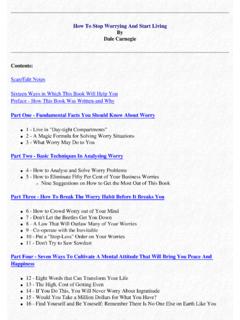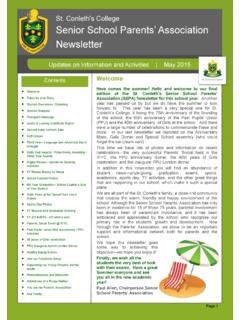Transcription of Nursing Care Plan A Client with Heart Failure
1 CHAPTER 30 / Nursing care of clients with Cardiac Disorders885 Per form as many activities as independently as you can. Space your meals and Eat six small meals a Allow time during the day for periods of rest and relax-ation. Perform all activities at a comfortable If you get tired during any activity, stop what you are doingand rest for 15 Resume activity only if you feel up to it. Stop any activity that causes chest pain, shortness of breath,dizziness, faintness, excessive weakness, or sweating. Rest. No-tify your physician if your activity tolerance changes and ifsymptoms continue after rest. Avoid straining. Do not lift heavy objects. Eat a high-fiber dietand drink plenty of water to prevent constipation. Use laxa-tives or stool softeners, as approved by your physician, toavoid constipation and straining during bowel movements.
2 Begin a graded exercise program. Walking is good exercisethat does not require any special equipment (except a goodpair of walking shoes). plan to walk twice a day at a comfort-able, slow pace for the first couple of weeks at home, andthen gradually increase the distance and pace. Below is asuggested schedule but progress at your own speed. Takeyour time. Aim for walking at least 3 times per week (everyother day).Week 1200 to 400 ft Twice a day, slow (1/4 mile)leisurely paceWeek 21/4 mile15 min, minimum of 3 times per weekWeeks 2 to 31/2 mile30 min, minimum of 3 times per weekWeeks 3 to 41 mile30 min, minimum of 3 times per weekWeeks 4 to 51 1/2 mile30 min, minimum of 3 times per weekWeeks 5 to 62 miles40 min, minimum of 3 times per weekBOX 30 3 Home Activity Guidelines for the Client with Heart FailureOne year ago, Arthur Jackson, 67 years old, had a large anteriorwall MI and underwent subsequent coronary artery bypass sur-gery.
3 On discharge, he was started on a regimen of enalapril(Vasotec) digoxin, furosemide (Lasix), coumadin, and a potassiumchloride supplement. He is now in the cardiac unit complaining ofsevere shortness of breath, hemoptysis, and poor appetite for 1week. He is diagnosed with acute Heart Jackson refuses to settle in bed, preferring to sit in the bedsiderecliner in high Fowler s position. He states, Lately, this is the onlyway I can breathe. Mr. Jackson states that he has not been able towork in his garden without getting short of breath. He complainsof his shoes and belt being too Ms. Takashi, RN, Mr. Jackson s nurse, obtains his nursinghistory, Mr. Jackson insists that he takes his medications states that he normally works in his garden for light exercise. Inhis diet history, Mr. Jackson admits fondness for bacon andChinese food and sheepishly admits to snacking between meals even though I need to lose weight.
4 Mr. Jacksons vital signs are: BP 95/72 mmHg, HR 124 and irreg-ular, R 28 and labored, and T F ( C). The cardiac monitorshows atrial fibrillation. An S3is noted on auscultation; the cardiacimpulse is left of the midclavicular line. He has crackles and dimin-ished breath sounds in the bases of both lungs. Significant jugularvenous distention, 3 pitting edema of feet and ankles, and ab-dominal distention are noted. Liver size within normal limits bypercussion. Skin cool and diaphoretic. Chest X-ray shows car-diomegaly and pulmonary Takashi identifies the following Nursing diagnoses for Excess fluid volumerelated to impaired car-diac pump and salt and water retention Activity intolerancerelated to impaired cardiac output Impaired health maintenancerelated to lack of knowledgeabout diet restrictionsEXPECTED OUTCOMESThe expected outcomes specify that Mr.
5 Jackson will: Demonstrate loss of excess fluid by weight loss and decreasesin edema, jugular venous distention, and abdominal distention. Demonstrate improved activity tolerance. Verbalize understanding of diet AND IMPLEMENTATIONMs. Takashi plans and implements the following selected nursinginterventions for Mr. Jackson. hourly vital signs and hemodynamic pressure measurements. Administer and monitor effects of prescribed diuretics and va-sodilators. Weigh daily;strict intake and output. Enforce fluid restriction of 1500 mL/24 hours: 600 mL day shift,600 mL evening shift, 300 mL at night. Auscultate Heart and breath sounds every 4 hours and as indi-cated. Administer oxygen per nasal cannula at 2 L/min. Monitor oxy-gen satururation continuously. Notify physician if less than94%. High Fowler s or position of comfort.
6 Notify physician of significant changes in laboratory values. Teach about all medications and how to take and record information about anticoagulant therapy and signs care PlanA Client with Heart Failure (continued)886 UNIT VIII / Responses to Altered Cardiac FunctionRESPIRATORY Tachypnea Paroxysmal nocturnal dyspnea Labored respirations Cough productive of frothy, Dyspneapink sputum Orthopnea Crackles,wheezesCARDIOVASCULAR Tachycardia Cool,clammy skin Hypotension Hypoxemia Cyanosis Ventricular gallopNEUROLOGIC Restlessness Feeling of impending doom AnxietyManifestations of Pulmonary EdemaTHE Client with PULMONARY EDEMAP ulmonary edemais an abnormal accumulation of fluid in theinterstitial tissue and alveoli of the lung. Both cardiac and non-cardiac disorders can cause pulmonary edema. Cardiac causesinclude acute myocardial infarction, acute Heart Failure , andvalvular disease.
7 Cardiogenic pulmonary edema,the focus ofthis section, is a sign of severe cardiac decompensation. Non-cardiac causes of pulmonary edema include primary pul-monary disorders, such as acute respiratory distress syndrome(ARDS), trauma, sepsis, drug overdose, or neurologic seque-lae. Pulmonary edema due to ARDS is discussed in Chapter edema is a medical emergency: The Client is lit-erally drowning in the fluid in the alveolar and interstitial pul-monary spaces. Its onset may be acute or gradual, progressingto severe respiratory distress. Immediate treatment is cardiogenic pulmonary edema, the contractility of the leftventricle is severely impaired. The ejection fraction falls as theventricle is unable to eject the blood that enters it, causing asharp rise in end-diastolic volume and pressure.
8 Pulmonary hy-drostatic pressures rise, ultimately exceeding the osmotic pres-sure of the blood. As a result, fluid leaking from the pulmonarycapillaries congests interstitial tissues, decreasing lung compli-ance, and interfering with gas exchange. As capillary and inter-stitial pressures increase further, the tight junctions of the alve-olar walls are disrupted, and the fluid enters the alveoli, alongwith large red blood cells and protein molecules. Ventilationand gas exchange are severely disrupted, and hypoxia Client with acute pulmonary edema presents with classicmanifestations (see box below). Dyspnea, shortness of breath,and labored respirations are acute and severe, accompanied byorthopnea, inability to breathe when lying down. Cyanosis ispresent, and the skin is cool, clammy, and diaphoretic. A pro-ductive cough with pink, frothy sputum develops due to fluid,RBCs, and plasma proteins in the alveoli and airways.
9 Crack-les are heard throughout the lung fields on auscultation. As thecondition worsens, lung sounds become harsher. The Client of-ten is restless and highly anxious, although severe hypoxia maycause confusion or noted earlier, pulmonary edema is a medical rapid and effective intervention, severe tissue hypoxiaand acidosis will lead to organ system Failure and care PlanA Client with Heart Failure (continued) Design an activity plan with Mr. Jacksonthat incorporates preferred activities andscheduled rest periods. Instruct about sodium-restricted diet. Allow meal choiceswithin allowed limits. Consult dietitian for planning and teaching Mr. and about low-sodium Jackson is discharged after 3 days in the cardiac unit. He haslost 8 pounds during his stay and states it is much easier tobreathe and his shoes fit better.
10 He is able to sleep in semi-Fowler sposition with only one pillow. His peripheral edema has and Mrs. Jackson met with the dietitian, who helped them de-velop a realistic eating plan to limit sodium, sugar, and fats. The di-etitian also provided a list of high-sodium foods to avoid. is relieved to know that he can still enjoy Chinese foodprepared without monosodium glutamate (MSG) or added Takashi and the physical therapist designed a progressive ac-tivity plan with Mr. Jackson that he will continue at home. He re-mains in atrial fibrillation, a chronic condition. His knowledge ofdigoxin and coumadin has been assessed and reinforced. confirms that he is able to accurately check his pulse andcan list signs of digoxin toxicity and excessive Thinking in the Nursing Process1.

